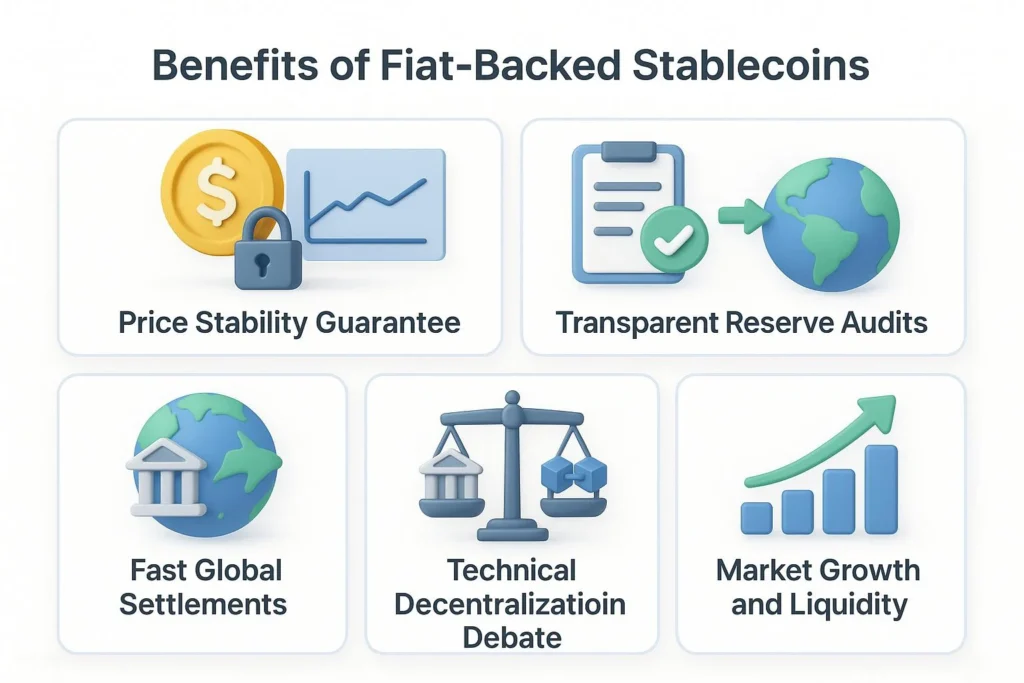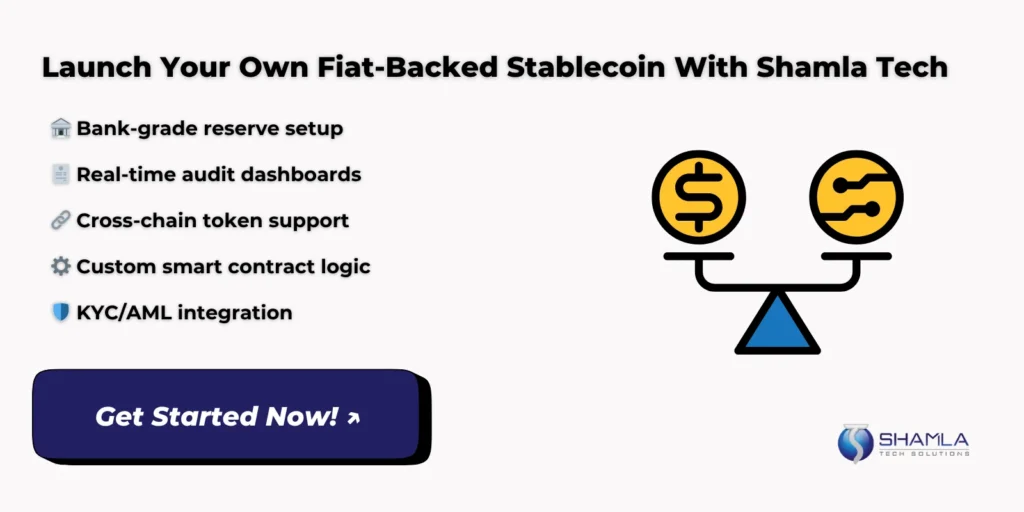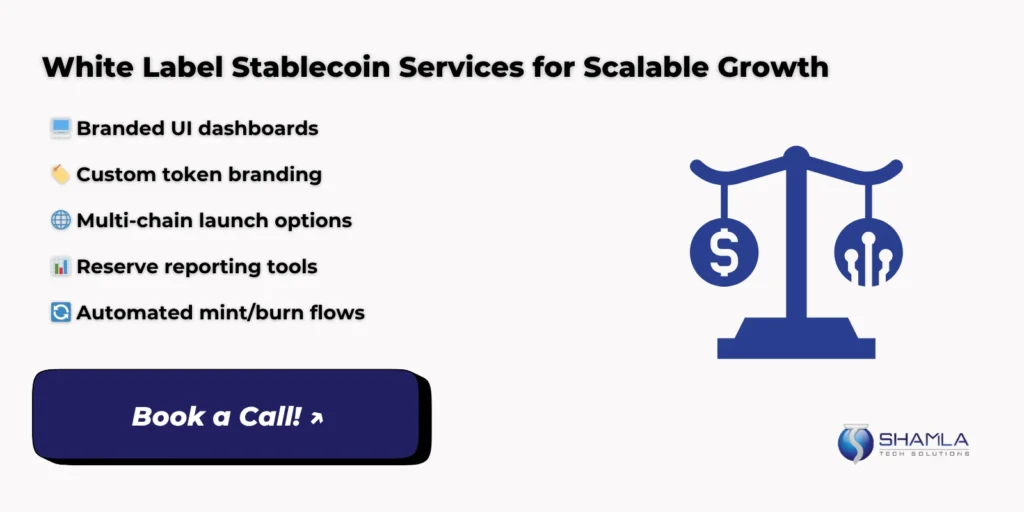What Is a Fiat-Backed Stablecoin?
Fiat-backed stablecoins are tokens issued on blockchains that keep value by holding equal amounts of cash reserves. They solve crypto price swings by pegging each token to a standard asset. If someone asks “what is fiat cryptocurrency,” the answer is digital money directly tied to real-world money. These coins use straightforward banks, audits, and controlled reserves instead of complex supply rules. Because they issue tokens only when funds arrive, they prevent excess tokens. Developers and finance teams prefer this design for trust and clarity. As a result, fiat crypto offers a reliable way to store value and speed up payments.
Primary fiat-backed stablecoins rely on reserves held in bank accounts to match every token in circulation. These systems hold fiat USD in separate custodial wallets and undergo regular checks by auditors. Common USD-backed stablecoins include those pegged to the dollar and other major currencies.
Unlike algorithmic designs, stablecoins backed by fiat guarantee that tokens reflect real deposits. This setup gives users clear proof of backing and simplifies fund recovery. Exchanges, wallets, and payment services also list these assets for trading and transfers. Institutions use them to hedge against market moves and ensure liquidity without exposing holders to unpredictable price dips.
Developers choose from different types of fiat-backed stablecoins based on project needs. Common options include those using direct bank reserves, trust structures, insurance guarantees. Some designs use pooled collateral or commercial paper to boost yield while preserving stability.
Today’s top fiat-backed stablecoins run on major blockchains to enable quick settlements and cross-border payments. Their code libraries integrate with wallets, exchanges, and DeFi protocols. Teams can audit reserve proof and smart contracts for security. By comparing supply limits, fee structures, and governance models, builders pick the best fit. This flexibility makes fiat-backed stablecoins essential tools for finance apps and global trade.
Benefits of Fiat-Backed Stablecoins

1. Price Stability Guarantee
2. Transparent Reserve Audits
3. Fast Global Settlements
4. Technical Decentralization Debate
5. Market Growth and Liquidity
How Do Fiat-Backed Stablecoins Work & Make Money?
1. Issuance and Redemption Mechanism
2. Reserve Storage and Auditing
3. Transaction Fees and Network Costs
4. Earning Yield on Reserves
5. Supply Growth and Market Metrics
Building & Using Fiat-Backed Stablecoins in the Real World
1. Integration & Architecture
2. Development Workflow
3. Partner Services
4. Hiring & Solutions
5. Real-World Use Cases
Conclusion
Fiat-backed stablecoins deliver steady value by linking tokens to real cash, easing transfers and boosting transaction speed. Their clear reserve model reduces price swings and builds user trust. As Web3 expands and traditional finance adopts tokenized assets, these stablecoins remain vital infrastructure for seamless payments and reliable value storage.
Shamla Tech is a top stablecoin development company, offering custom stablecoin development solutions for businesses. We handle reserve setup, smart contract coding, compliance integration, and deploy fiat crypto and algorithmic token models. Partner with Shamla Tech to launch robust, secure stablecoins that meet regulatory and performance standards.






